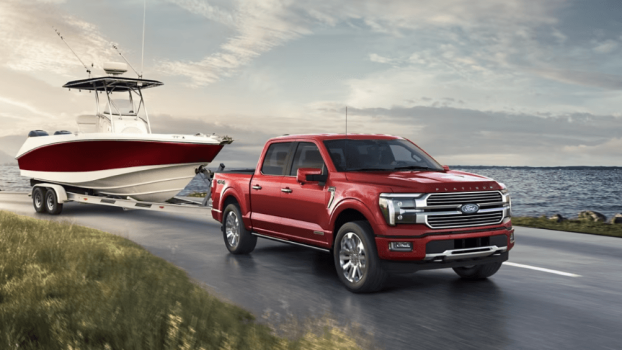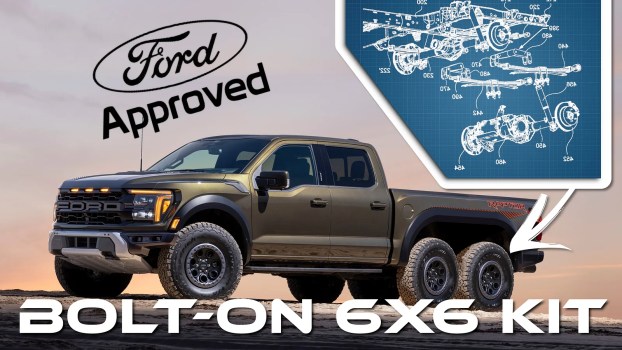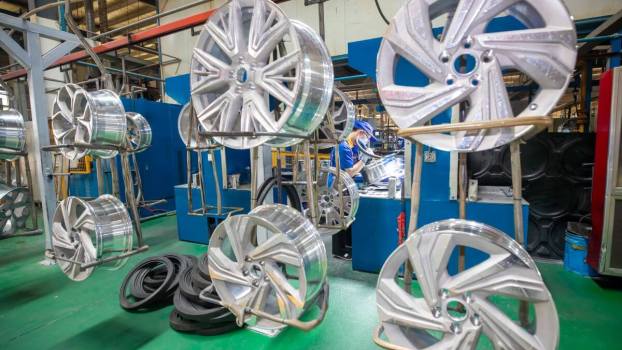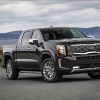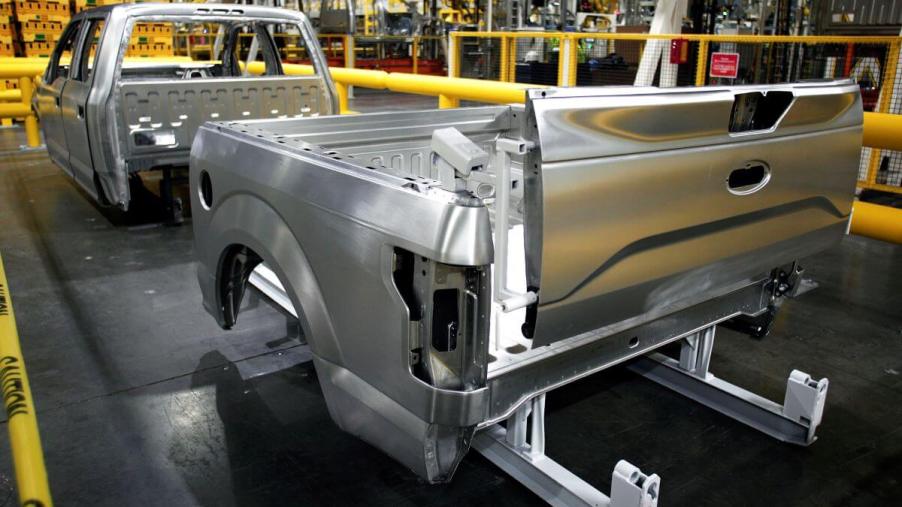
Which Ford Trucks Have Aluminum Bodies?
The first aluminum-bodied pickup truck was a bold change. The Ford F-150 and Super Duty symbolize hard-working strength, and steel was once considered an integral part of that image. Then, the automaker decided to switch everything up and swap out its steel truck bodies for aluminum. Some critics predicted a sharp decline in sales or resale value, but things are going pretty well for Ford.
Which Ford trucks have aluminum bodies?
Since 2015, the Ford F-150 has had an aluminum body. In 2017, the F-Series Super-Duty trucks also gained aluminum bodies. Both were the first pickups in their class to get bodies made from the lighter-weight material. However, the F-Series still retains a frame made of high-strength steel.
At the moment, the Ford F-150 and F-Series Super Duty are the only trucks that have both aluminum bodies and aluminum beds. Chevrolet Silverado did replace some steel Silverado body panels with aluminum ones starting in 2019, but not the bed. And, although the GMC Sierra also has ‘mixed-material’ body panels, it skipped an aluminum bed for a carbon-fiber one. Ram has also only used aluminum selectively. Finally, the latest Toyota Tundra has a composite bed, and the outgoing Nissan Titan is primarily made of steel.
Additionally, as for Ford’s other truck models, both the Maverick and the recently redesigned Ranger use a combination of steel and aluminum parts.
Critics assumed, at the 2015 Ford F-150’s launch, that aluminum would be too weak and expensive to fix. According to a later Autoweek report, that was still the prevailing mentality for some engineers and designers a few years later. There is, after all, the old saying, “Steel is real.” However, that hasn’t really proven to be the case.
Aluminum-built Ford F-150 and Super Duty models aren’t more expensive to fix or insure
There have been a lot of videos put out demonstrating how the aluminum body panels and bed of the Ford F-150 aren’t as strong as steel or cost more to fix. Chevrolet did it for one of their “Real People” ads. Edmunds actually bought and tested a 2015 F-150 to attempt to prove or disprove the notion. Additionally, there are countless YouTube clips of people smacking trucks with sledgehammers or saying the panels are made out of beer cans.
Still, aluminum isn’t expensive to fix or live with. In 2017, one Texas dealership was swarmed with hail-damaged aluminum F-150s. However, because Ford invested in proper technician training and designed the pickup with a modular structure, the average aluminum truck repair cost $2,000 less than a steel repair would. Not only did this reduce the labor hours needed to fix the trucks, some aluminum parts were actually cheaper than their steel counterparts. This is partially due to aluminum’s recyclable nature: Ford could melt down leftover metal for more parts.
Insurance costs also aren’t more expensive for aluminum than steel. In fact, because of the ease of repair, the Highway Loss Data Institute reports collision claim severity is down by 7%. That being said, collision claims overall are up 7%. That’s because, to be fair, aluminum isn’t quite as strong as steel.
Ford’s aluminum truck bodies have proven strong and rust-resistant
That being said, the trucks aren’t made out of beer cans. The aluminum Ford used has proven strong. The automaker spent over two decades researching aluminum manufacturing and chose a strong alloy used extensively in many industries, including military and aerospace. They’re not quite “military-grade,” as the ads proclaim, but they’re not too far off.
Those Chevrolet ads that showed cinder blocks bouncing into the rear bed? Who does that, and without a bed liner? And, if you were truly worried about the F-150’s panel strength, look no further than the infamous Tesla Cybertruck reveal. Tesla bashed an aluminum door panel with a sledgehammer, and all it got were a few dents. A Chevy Silverado or Ram 1500’s door would probably be dented, too.
What’s more, aluminum does not rust. Considering how many truck owners struggle with rust repairs, the average F-150 with aluminum body panels could outlast its competitors.
Lighter aluminum F-150 models can haul more while using less gas
In any case, the weight savings were undoubtedly worth it, and not just for the fuel-efficiency gains. As YouTuber Big Truck Big RV explained, lowering the F-Series’ body weight meant Ford could beef up the rest of the truck. A lighter body and stronger components meant the F-Series’ towing and payload capacities could increase. So, considering both the Ford F-150 and F-Series Super-Duty top their respective classes in payload capacity, it paid off.
Are aluminum-bodied trucks still controversial?
Unfortunately, the answer seems to be ‘yes’. However, the aluminum Ford F-150 and Super Duty body controversy isn’t based on fact anymore. Many truck manufacturers act like going “full aluminum” is something somehow beneath them and their customers. The fact that many still believe aluminum to be this delicate, expensive material also doesn’t help.
The data has shown that aluminum-bodied Ford trucks aren’t more expensive to fix than steel. Additionally, the increase in collision damage probably has just as much to do with the overall increase in truck and SUV weight as it does with material properties. Plus, if aluminum wasn’t a structurally sound metal, why would Ram and GM use it in their trucks at all?
If you want to buy a pickup, don’t feel like an aluminum body somehow discredits any of Ford’s trucks. Is aluminum dominating the truck industry? No. But that doesn’t make it worse than steel. Just different.
